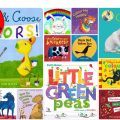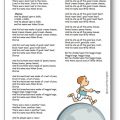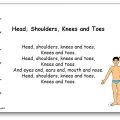- Author: Melanie Walsh
- Year of Publication: 2002
- Language: English
- Resource Type: Illustrated picture book
- Themes: Diversity, similarities and differences, tolerance, body parts, self-acceptance
- Recommended Age: 4 to 8 years old
- School Level: Kindergarten to Year 3 (French GS to CE2)
- Main Teaching Objective: Learn vocabulary related to body parts and raise awareness of diversity in English
My Nose, Your Nose is a picture book that introduces children with different skin colors, hair types, eye colors, nose shapes, and leg lengths. Each double page highlights a contrast, followed by a shared trait or preference. The message is clear: despite differences, children enjoy the same things and have much in common. It ends peacefully with all the characters closing their eyes to sleep.
Culture and Vocabulary
This book is perfect for introducing the concept of physical and cultural diversity. Vocabulary includes:
- Body parts: skin, nose, legs, eyes, hair, tongue
- Colors: brown, white, black, pink, blue, green, grey
- Adjectives: straight, curly, short, long, cheeky
- Verbs and expressions of preference: kick, like (the smell of…), don’t like (to shampoo), close (their eyes)
Grammar and Structures
Useful recurring patterns:
- Possessive form: Daisy’s skin is brown.
- Comparative contrast: Arthur’s nose turns up. Agnes’s nose turns down.
- Expressing similarities: But they both like…
- Irregular plural: eyes
- Present tense with “to be”
- Contrast with “but”: recurring sentence structure “X…, but Y…”
- Simple present for likes and habits: they both like…, they don’t like…
- Possessive pronouns: my / your
- Repetitive sentence patterns that support memorization: X has…, X’s Y is…, they both…
Phonology
The book can highlight:
- Sound awareness activities: alliteration, repeated sounds
- Practice contrasting sounds in key vocabulary: nose/rose, cake/kick
- Great for choral reading and rhythm work
- /s/ and /z/ sounds: nose, eyes, cheeks
- Alliteration: cheeky pink tongues
- The natural rhythm and repetition in English speech
Teaching Ideas
Before reading:
- Show the cover and guess the topic (“What do you see?”, ” Who do you see?“)
- Review vocabulary about the face and colors
During reading:
- Active listening: guess what’s next, mime the actions, repeat phrases
- Interactive reading with gestures and pointing “nose”, “tongue”…
After reading:
- Mini grammar lesson: “They both like…”
- Create new sentences in the same pattern: “Lucie’s hair is blond. Karim’s hair is black. But they both like playing football.”
- Self-portrait drawing with English sentence in the style of the book
- Create self-portraits and describe them in English
- Grammar mini-lesson: possessives & conjunction but
Cross-Curricular Links
- Civic Education: Respecting differences, living together
- Arts: Drawing self-portraits, coloring silhouettes
- Nursery Rhyme: “Head, shoulders, knees and toes“, “If you’re happy and you know it”
- Games: Body part bingo, adjective matching
Extension Idea: : making a collective class book
You can set up a “We are all different!” workshop over several sessions. Each student describes a classmate (or themselves) using simple sentence structures such as: “X has brown eyes. X has long legs. But we both like pizza.” These phrases highlight both physical differences and shared preferences.
Based on these sentences, students create an illustrated page with a drawing or a photo of themselves, a short description in English, and a small shared box: “We both like…”. All the pages are then assembled into a collective class book titled “Our Class Book of Faces”. This book can be displayed in the school, read to families, or presented to other classes to celebrate the richness and diversity of the group.
Conclusion
“My Nose, Your Nose” is a simple and effective picture book for exploring themes of physical diversity and shared preferences with young learners. With accessible vocabulary, repetitive sentence structures, and rich visual content, it supports early English acquisition while conveying essential human values.





